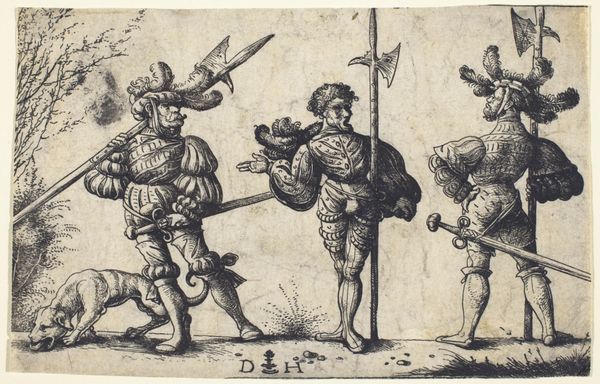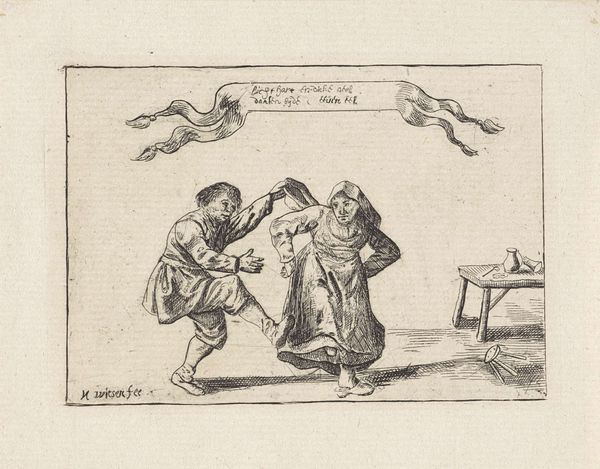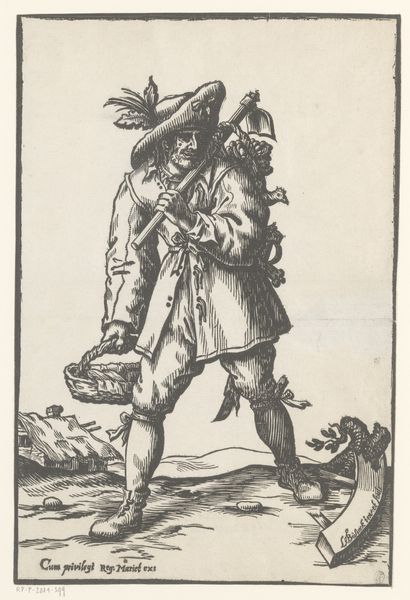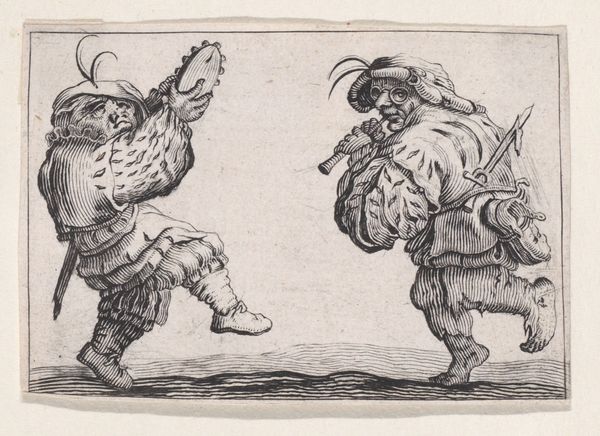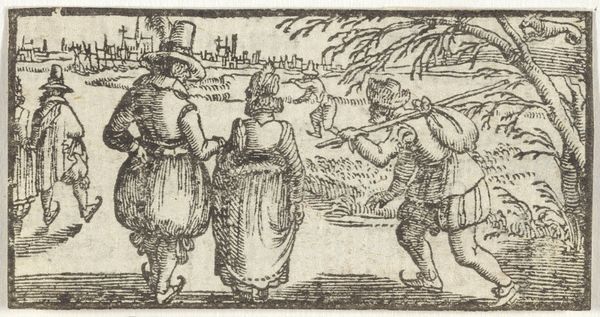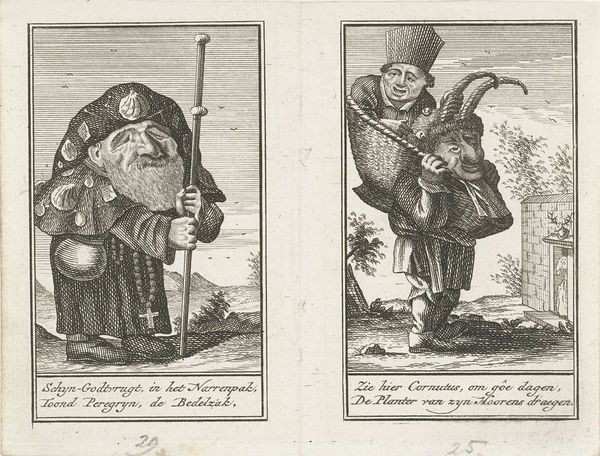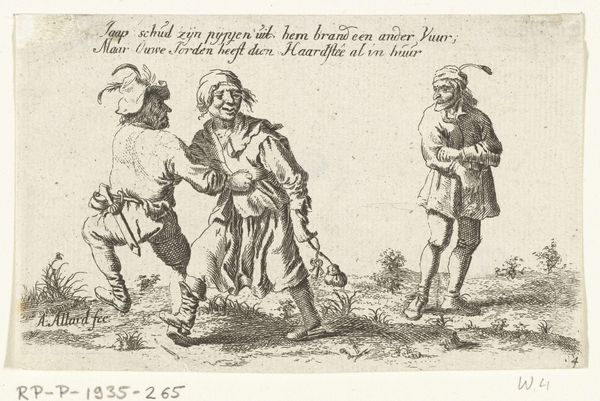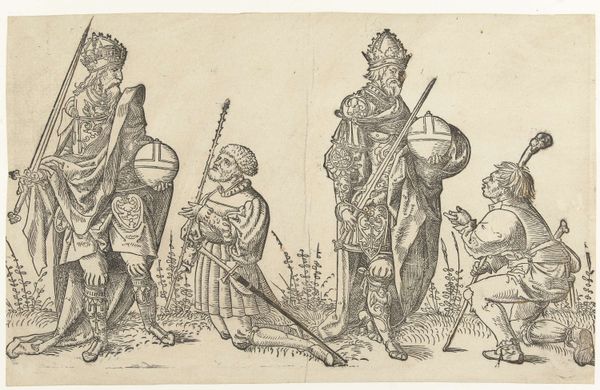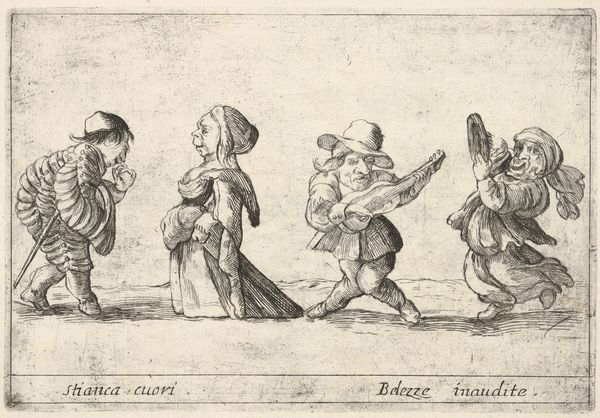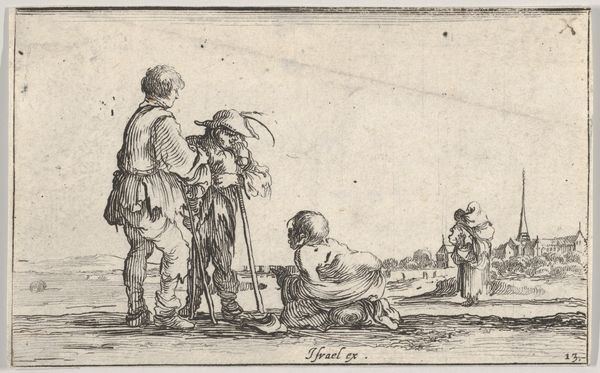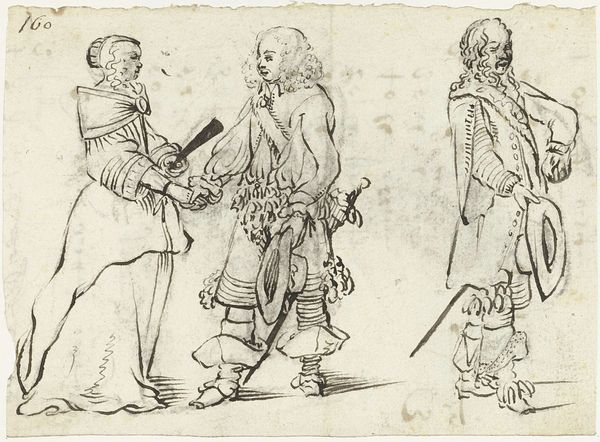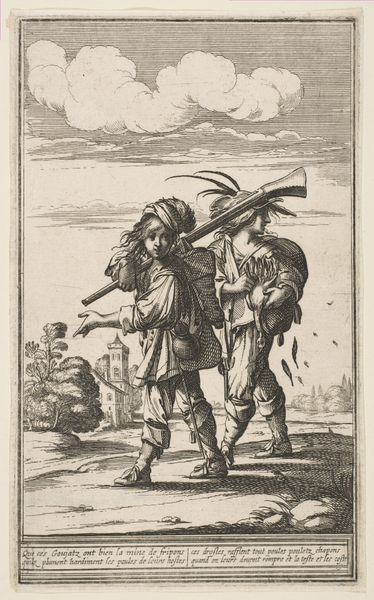
Callot figures; a dwarf man playing the drum at left, a beefeater in center, a flute player to right,'Six grotesques' (Six pièces de figures grotesques) 1684
0:00
0:00
drawing, print
#
drawing
#
baroque
# print
#
caricature
#
genre-painting
Dimensions: plate: 5 3/8 x 7 11/16 in. (13.6 x 19.6 cm) sheet: 6 13/16 x 10 1/16 in. (17.3 x 25.5 cm)
Copyright: Public Domain
Editor: This is "Callot figures; a dwarf man playing the drum at left, a beefeater in center, a flute player to right,'Six grotesques'" from 1684, by Agostino Mitelli II, made using printmaking techniques. These are very striking figures! Their expressions seem so intense, even caricatured. What sort of cultural context produced such characters? Curator: Indeed, these grotesques offer a fascinating insight into the social anxieties and power dynamics of the Baroque era. The exaggerated features and theatrical poses were common satirical tools. Consider the context: Absolutist rule was consolidating, and these images subtly undermined authority through ridicule. The printing press allowed for broad circulation of this social commentary. Editor: So, it’s not just about laughing at strange figures; it’s also about commenting on the powerful? Is the use of music relevant here? Curator: Precisely. The figures’ roles as a drummer and flute player point to performative aspects of power. They become spectacles, subjected to the public gaze, potentially mocked even by those they govern. Did the artist intentionally expose their flaws, making the powerful seem absurd? Editor: That makes sense. It’s almost like they’re symbols of something larger than themselves, used to send a specific message. It reminds me that art doesn’t exist in a vacuum. Curator: Exactly! By thinking about the societal structures, Mitelli's intention in satirizing figures within the print became much clearer. Perhaps even, these musicians aren't merely figures, they represent institutions viewed critically at the time. Editor: I see the figures in a completely different light. Thank you for that interesting perspective! Curator: My pleasure. Examining the intersection of art, society, and politics makes the viewing experience even richer.
Comments
No comments
Be the first to comment and join the conversation on the ultimate creative platform.
